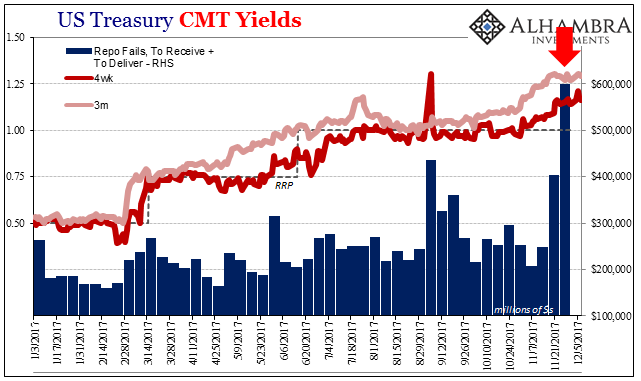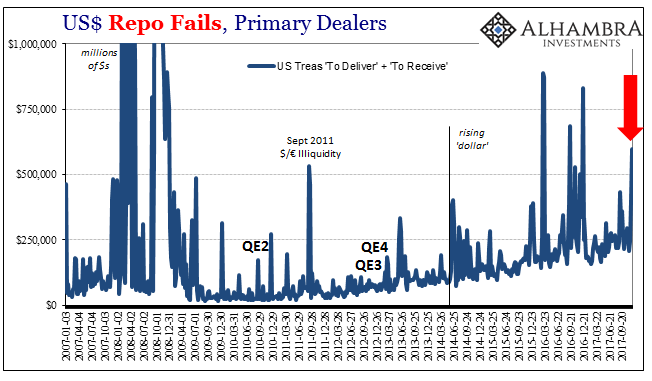I’m going to go out on a limb and claim there is something seriously wrong in repo. All jokes aside, I know it sounds like a broken record but the dimension that matters is not intermittent collateral problems so much as the greater intensity to them and in a condensing timeframe. Escalation is a description you really don’t want to fit the circumstances.
Earlier this week I noted the suspiciously shallow track of the 4-week T-bill equivalent yield, now less than a week ahead of the next “rate hike.” It continues to suggest, as it has for much of this year, collateral tightness (unrelated to the Fed’s symbolic federal funds policy) to some substantial degree. That particular bill yield got as high as 121 bps on Tuesday, but has declined again to 116 bps as of the treasury market close today.
Given all that it was not surprising last week to find first a rather sharp increase in repo fails for the week of November 22. The latest update from FRBNY as reported to the central bank by the primary dealers, however, truly sticks out. For trading last week, fails (both “to receive” plus “to deliver”) were tallied at just barely less than $600 billion. It was by far the most in a year, among the highest since 2008. That’s an increase of nearly 50% from the drastic repo fireworks in early September (that were timed with CNY/HKD reversals and all that has so far been unleashed).


Again, it’s hard to see how the word “escalation” doesn’t fit here. Not only that, also like early September, the GC rate for the 10-year UST collateral has over the last few days dropped to well below the fails penalty rate. That’s indicative of huge and broadening collateral pressures in the repo market – just as it was three months ago (exactly).
As is almost always the case with these things, of the very few in the mainstream who follow the repo market they write it all off as UST shorts. As noted also earlier this week with regard to UST futures trading, the bond market isn’t at all onboard with rising interest rates. It has positioned instead in the other direction consistent with repo fails – tightening, or lower yields as in the repo equivalent of the interest rate fallacy.









Leave A Comment